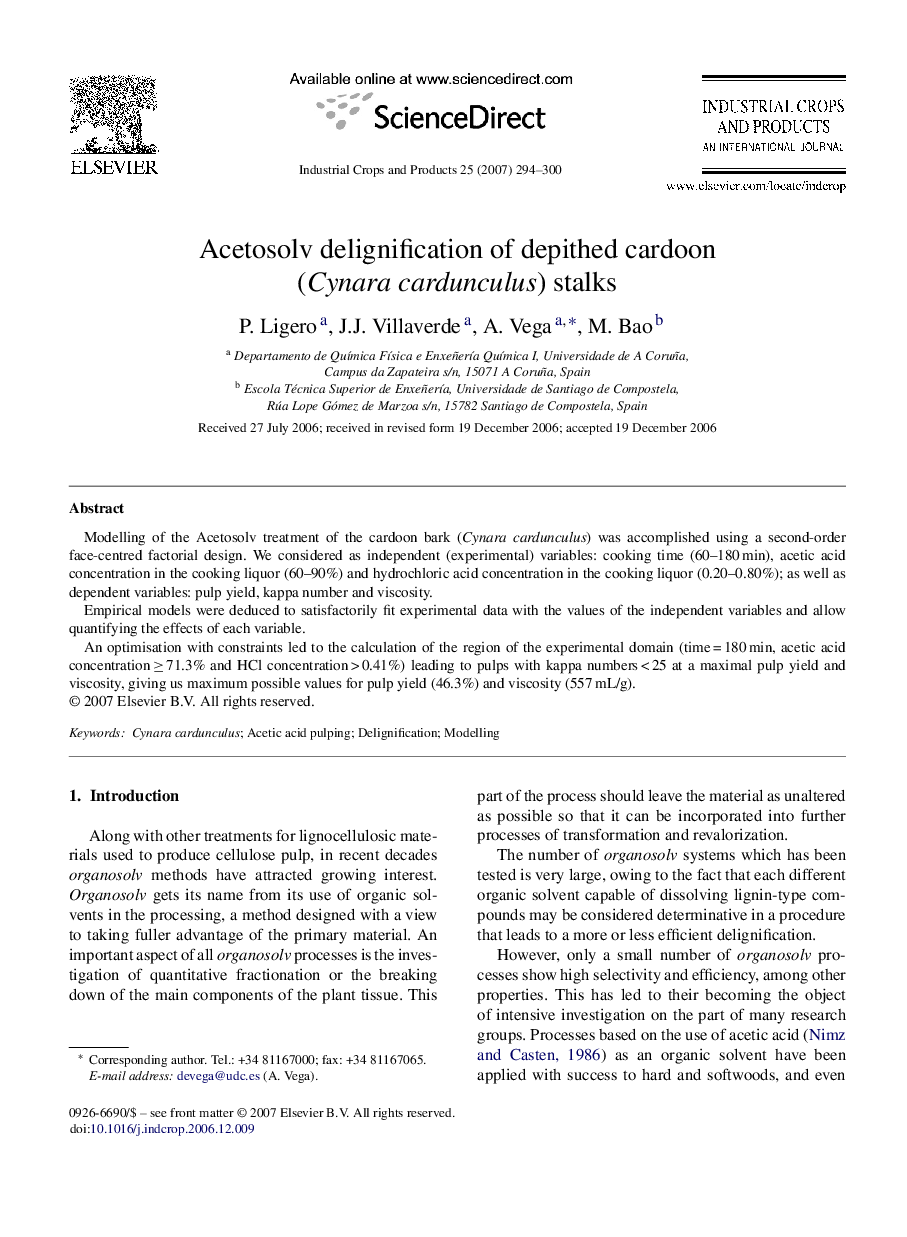| Article ID | Journal | Published Year | Pages | File Type |
|---|---|---|---|---|
| 4515350 | Industrial Crops and Products | 2007 | 7 Pages |
Modelling of the Acetosolv treatment of the cardoon bark (Cynara cardunculus) was accomplished using a second-order face-centred factorial design. We considered as independent (experimental) variables: cooking time (60–180 min), acetic acid concentration in the cooking liquor (60–90%) and hydrochloric acid concentration in the cooking liquor (0.20–0.80%); as well as dependent variables: pulp yield, kappa number and viscosity.Empirical models were deduced to satisfactorily fit experimental data with the values of the independent variables and allow quantifying the effects of each variable.An optimisation with constraints led to the calculation of the region of the experimental domain (time = 180 min, acetic acid concentration ≥ 71.3% and HCl concentration > 0.41%) leading to pulps with kappa numbers < 25 at a maximal pulp yield and viscosity, giving us maximum possible values for pulp yield (46.3%) and viscosity (557 mL/g).
